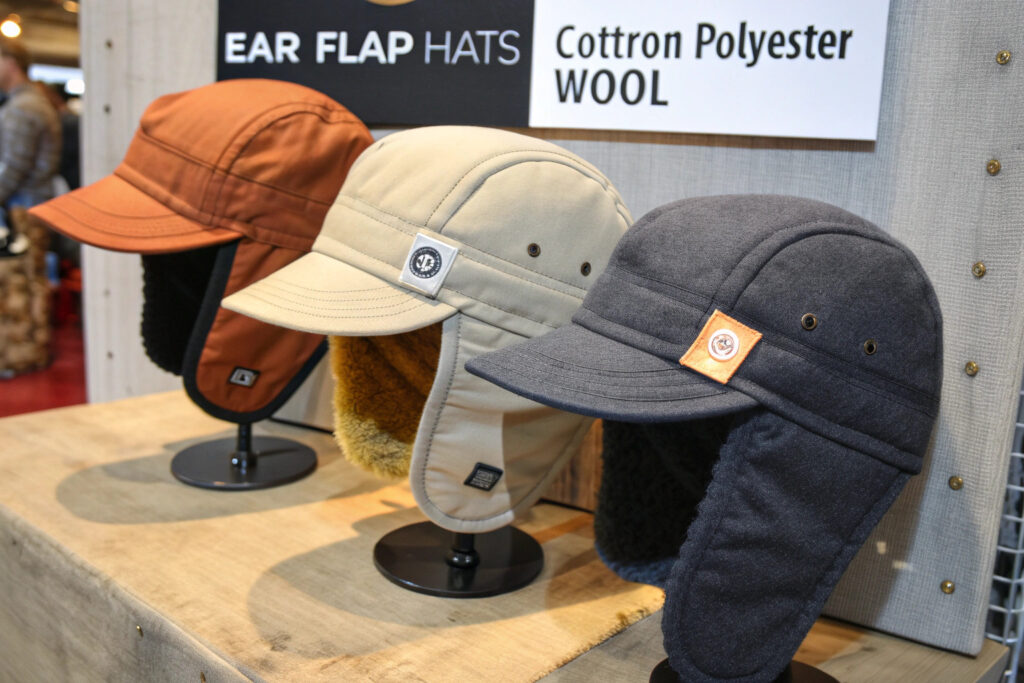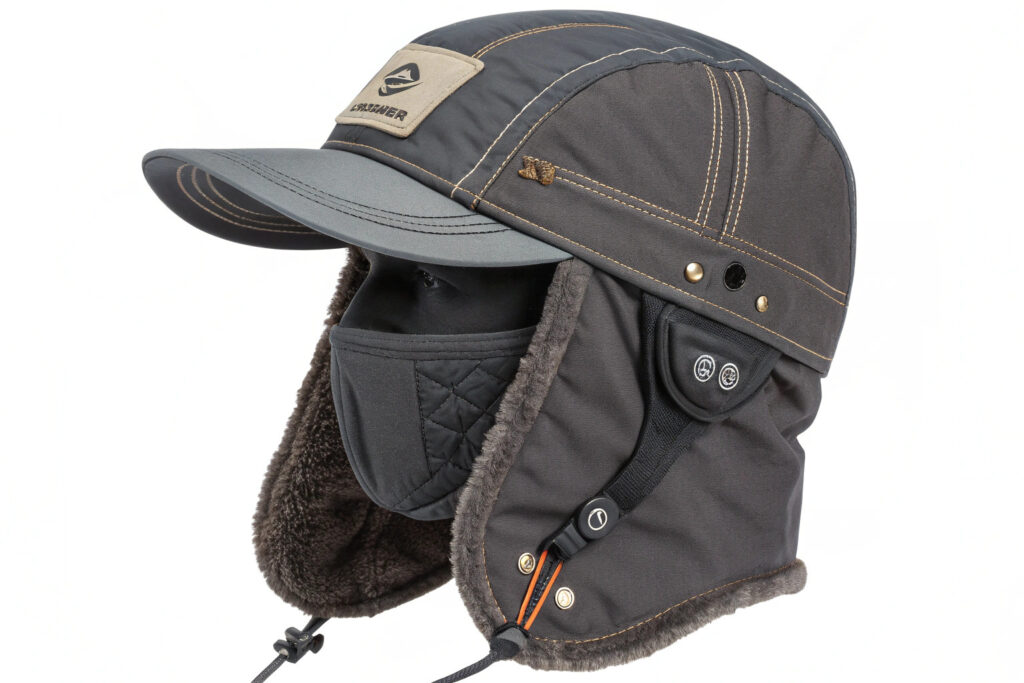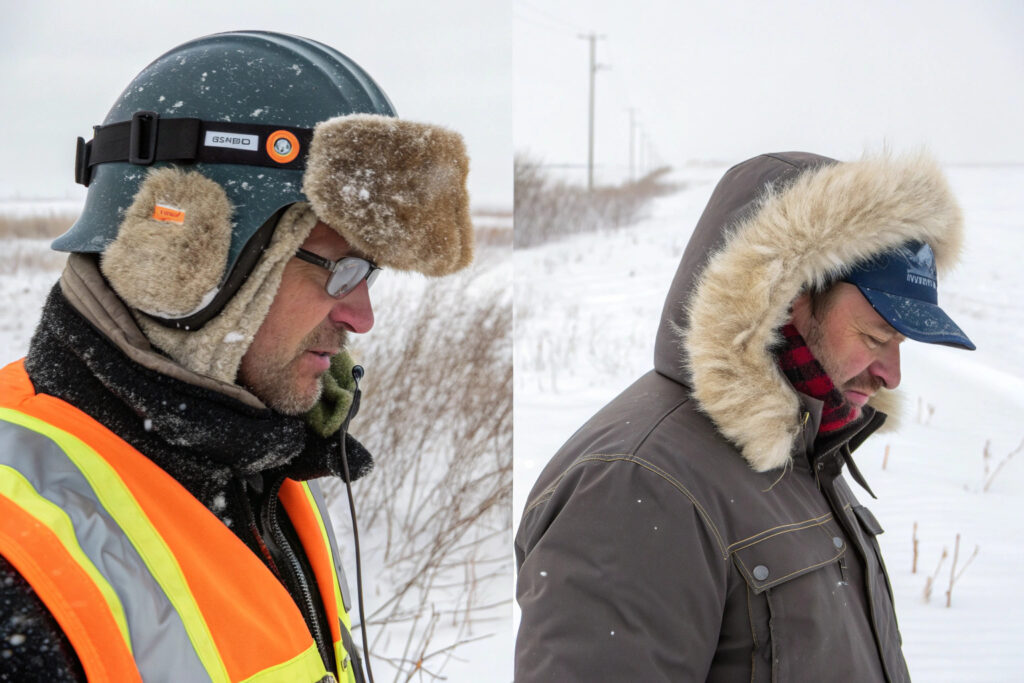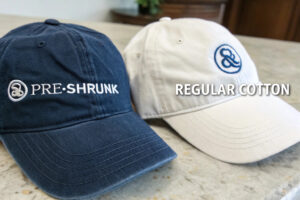Outdoor workers, winter sports enthusiasts, and residents of arctic regions face significant challenges finding headwear that provides adequate protection in extreme cold conditions. Standard winter hats often fail to protect vulnerable ears and neck areas, leading to discomfort, frostbite risk, and reduced performance in cold environments. The search for effective ear flap hats requires specialized knowledge of materials, construction, and performance features.
The most effective ear flap hats for extreme cold combine windproof and waterproof materials, thermal insulation, secure fit systems, and strategic coverage that protects ears, neck, and forehead while maintaining comfort and mobility.Successful sourcing requires understanding insulation technologies, material performance in sub-zero conditions, and design features that prevent heat loss in the most vulnerable areas.
This comprehensive guide explores the technical specifications, material requirements, supplier qualifications, and performance features necessary to source ear flap hats that deliver genuine protection in extreme cold environments.
What technical specifications ensure protection in extreme cold?
Ear flap hats for extreme conditions must meet specific technical standards that differentiate them from fashion winter wear. Understanding these specifications ensures the hats will perform when temperatures drop dangerously low.
Critical technical specifications include temperature ratings verified by independent testing, windproof and waterproof certifications, seam construction that prevents heat leakage, and coverage areas that protect the most vulnerable body parts in cold environments.

Why are independent temperature ratings crucial?
Independent temperature ratings provide verified performance data rather than manufacturer claims. Look for hats tested according to ASTM F2732 standard for rating the temperature range of cold weather clothing, which evaluates thermal insulation under controlled laboratory conditions. Reputable manufacturers provide these test results showing the specific temperature range (e.g., -20°F to -40°F/-29°C to -40°C) where the hat provides adequate protection. This verification is particularly important for workers in industries like oil and gas, utilities, and construction who rely on their gear for safety in extreme conditions. Without independent verification, temperature claims may reflect ideal conditions rather than real-world performance.
How does coverage area affect heat retention?
Strategic coverage area directly impacts heat retention in extreme cold. The most effective designs protect the whole head heat loss zones including the ears, forehead, temples, and back of neck—areas where blood vessels are close to the skin surface and heat loss occurs rapidly. Superior ear flap hats extend coverage to create a seamless transition between hat and collar, preventing the gap that allows cold air penetration. The ear flaps should completely cover ears with additional overlap, while the back flap should extend sufficiently to protect the neck when moving or turning the head. This comprehensive coverage creates a microclimate that maintains warmth more effectively than partial coverage designs.
Which materials provide optimal insulation and protection?
Material selection determines both the immediate warmth and long-term performance of ear flap hats in extreme conditions. The right materials work together to create a system that traps warmth while managing moisture.
The most effective materials include advanced synthetic insulations, natural fur and wool combinations, windproof and waterproof membranes, and moisture-wicking linings that work together to maintain warmth and comfort in severe cold.

Why are synthetic insulations preferred for wet cold conditions?
Synthetic insulations like PrimaLoft® Gold and Thermolite® maintain their insulating properties when wet, unlike down which collapses and loses effectiveness. These [advanced synthetic fibers](https://www.prim loft.com/technology/) trap air in complex structures that continue providing warmth even when damp from perspiration or precipitation. For ear flap hats used in environments with variable conditions (such as coastal areas or regions with freezing rain), synthetic insulation ensures consistent performance. The best hats combine different insulation weights—lighter in crown areas, heavier in ear and neck flaps—to optimize warmth without excessive bulk. This strategic application provides protection where most needed while maintaining overall comfort and mobility.
How does natural fur enhance extreme cold performance?
Natural fur, particularly coyote, fox, or beaver, provides exceptional performance around the face opening of ear flap hats. The unique structure of fur fibers creates a microclimate of still air that insulates more effectively than synthetic materials in dry cold conditions. The fur's breathability prevents frost buildup from exhaled moisture, a common problem with synthetic materials in very low temperatures. For cultural or ethical considerations, some manufacturers offer high-performance synthetic fur alternatives that mimic the protective properties of natural fur. Whether natural or high-quality synthetic, the fur ruff creates a barrier against wind while trapping warm air around the face—a critical feature in windy sub-zero conditions.
What design features maximize functionality in extreme cold?
Beyond basic materials, specific design features significantly enhance the functionality and protection of ear flap hats in extreme conditions. These elements address the practical challenges of working or recreating in severe cold.
Essential design features include adjustable closure systems, integrated face protection, compatibility with other cold weather gear, and practical elements that enhance usability while maintaining protection.

Why are multiple closure systems important?
Multiple closure systems allow customization for varying conditions and activity levels. The most effective designs include adjustable chin straps that secure the hat during high winds, toggle closures that fine-tune fit around the face, and extended flaps that can be raised or lowered as conditions change. For workers who need to communicate or need peripheral vision, being able to secure the ear flaps up without removing the hat provides crucial flexibility. These systems should be operable while wearing gloves or mittens, with large toggles and robust cords that function in extreme cold without becoming brittle or difficult to manipulate.
How does integration with other gear affect performance?
Proper integration with other cold weather gear prevents the gaps that cause significant heat loss. Ear flap hats should work seamlessly with hooded jackets and parkas, with the hat's crown fitting comfortably inside the hood without creating pressure points. Designs with gussets or strategic pleating accommodate hoods while maintaining coverage. For industrial applications, the hat must accommodate hard hat systems either by fitting underneath or integrating with helmet liners. Communication and hearing protection compatibility is also crucial—look for designs with thin zones over ears that accommodate electronic hearing protection or communication headsets without compromising insulation.
How to verify supplier capabilities for extreme cold gear?
Sourcing hats for extreme conditions requires suppliers with specific expertise in cold weather technology and manufacturing. Verifying these capabilities ensures products will perform as needed in critical situations.
Thorough supplier verification includes assessing their testing facilities, quality control processes, material sourcing expertise, and understanding of end-use conditions in extreme cold environments.

What testing capabilities indicate genuine expertise?
Suppliers with in-house environmental testing chambers demonstrate serious commitment to cold weather performance. Look for facilities capable of temperature testing down to -40°F/C, wind tunnels for evaluating wind chill resistance, and precipitation simulation for testing water resistance. The most qualified suppliers conduct both material-level testing (insulation value, breathability, waterproofness) and finished product testing on complete hats. They should provide test reports specific to each style rather than generic material data. This comprehensive testing approach ensures that the entire system—materials, construction, and design—works together to provide protection in extreme conditions.
Why is cold weather experience crucial for manufacturers?
Manufacturers with actual cold weather experience understand practical considerations that laboratory testing might miss. Look for suppliers who participate in field testing in extreme environments and have relationships with professional users like arctic researchers, mountain guides, or polar expedition teams. This real-world feedback leads to design improvements like strategic reinforcement in high-wear areas, optimized moisture management systems, and practical features that users discover through experience. Suppliers who only manufacture for fashion markets often overlook these nuances, resulting in hats that look appropriate but fail in actual extreme conditions.
Conclusion
Sourcing effective ear flap hats for extreme cold requires careful attention to technical specifications, material performance, design features, and supplier capabilities. The most successful sourcing partnerships deliver products that have been rigorously tested and refined for genuine extreme conditions rather than adapted from general winter wear.
At Global-Caps, we specialize in extreme cold headwear with verified performance ratings and design features developed through collaboration with professional users in arctic environments. Our manufacturing processes and quality controls ensure consistent performance in the most demanding conditions. If you need ear flap hats that provide genuine protection in extreme cold, contact our Business Director Elaine at elaine@fumaoclothing.com. Let us provide the technical expertise and manufacturing capability to keep people safe and productive in the world's coldest environments.







